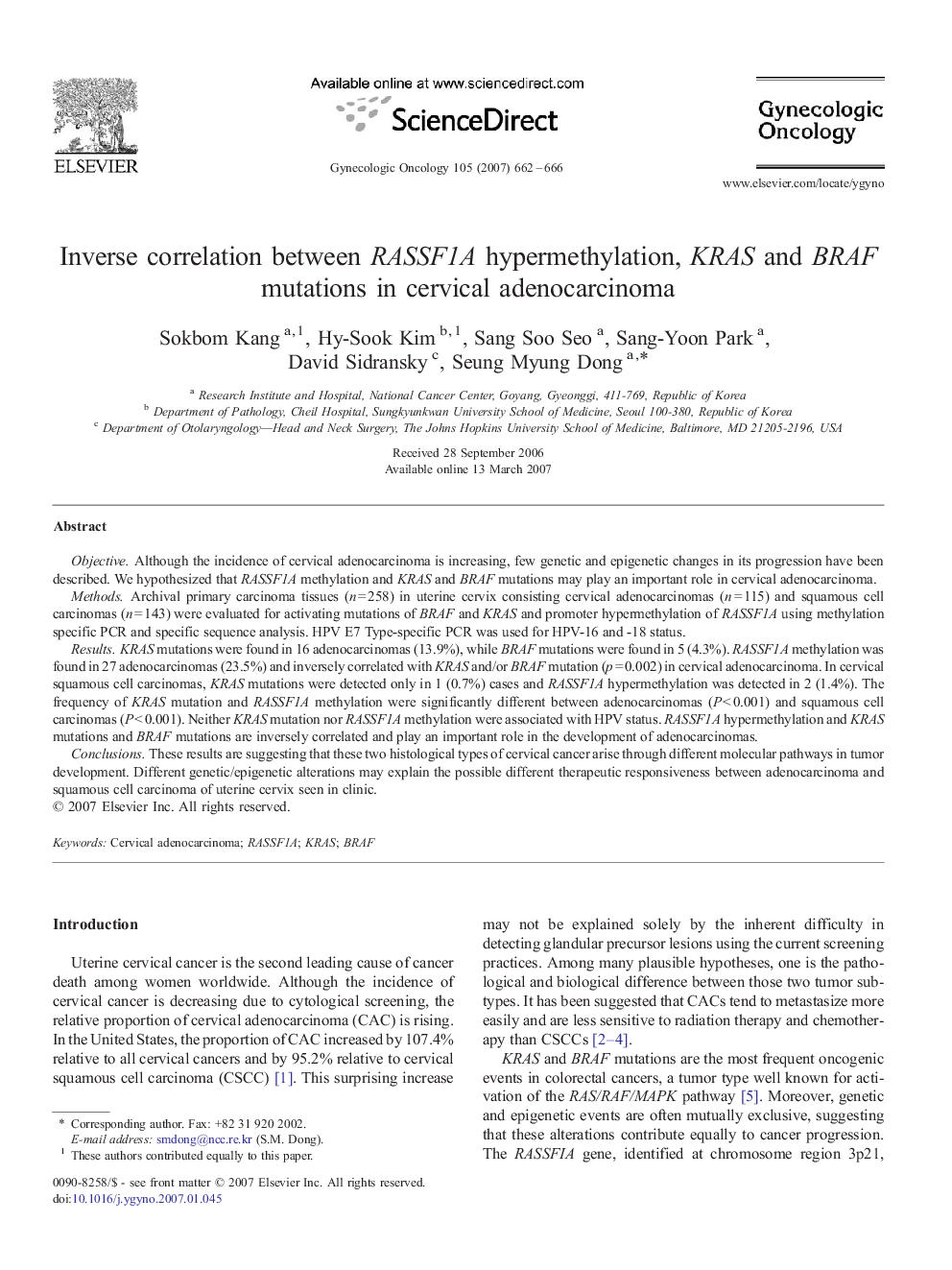| کد مقاله | کد نشریه | سال انتشار | مقاله انگلیسی | نسخه تمام متن |
|---|---|---|---|---|
| 3947651 | 1254465 | 2007 | 5 صفحه PDF | دانلود رایگان |

Objective.Although the incidence of cervical adenocarcinoma is increasing, few genetic and epigenetic changes in its progression have been described. We hypothesized that RASSF1A methylation and KRAS and BRAF mutations may play an important role in cervical adenocarcinoma.Methods.Archival primary carcinoma tissues (n = 258) in uterine cervix consisting cervical adenocarcinomas (n = 115) and squamous cell carcinomas (n = 143) were evaluated for activating mutations of BRAF and KRAS and promoter hypermethylation of RASSF1A using methylation specific PCR and specific sequence analysis. HPV E7 Type-specific PCR was used for HPV-16 and -18 status.Results.KRAS mutations were found in 16 adenocarcinomas (13.9%), while BRAF mutations were found in 5 (4.3%). RASSF1A methylation was found in 27 adenocarcinomas (23.5%) and inversely correlated with KRAS and/or BRAF mutation (p = 0.002) in cervical adenocarcinoma. In cervical squamous cell carcinomas, KRAS mutations were detected only in 1 (0.7%) cases and RASSF1A hypermethylation was detected in 2 (1.4%). The frequency of KRAS mutation and RASSF1A methylation were significantly different between adenocarcinomas (P < 0.001) and squamous cell carcinomas (P < 0.001). Neither KRAS mutation nor RASSF1A methylation were associated with HPV status. RASSF1A hypermethylation and KRAS mutations and BRAF mutations are inversely correlated and play an important role in the development of adenocarcinomas.Conclusions.These results are suggesting that these two histological types of cervical cancer arise through different molecular pathways in tumor development. Different genetic/epigenetic alterations may explain the possible different therapeutic responsiveness between adenocarcinoma and squamous cell carcinoma of uterine cervix seen in clinic.
Journal: Gynecologic Oncology - Volume 105, Issue 3, June 2007, Pages 662–666